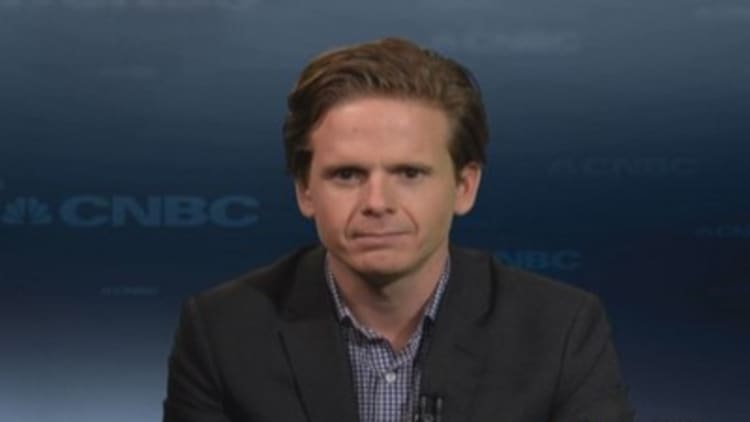
Wall Street is about to see the return of one of TV's longstanding stars: QVC.
The country's largest shopping network by viewers hasn't traded as a separate stock since 1995, when it was acquired by a consortium that included John Malone's Liberty Media. But during the second quarter, QVC's current parent Liberty Interactive plans to create a tracking stock that separates QVC from a group of e-commerce businesses it also owns, including Evite and Backcountry.com.
While Liberty Interactive won't actually spin off QVC, investors who own the tracker will be able to bet on QVC specifically. Until now, QVC's earnings power has been tough to recognize given the heavy expenses associated with Liberty Interactive's Internet businesses.
(Read more: Jos. A Bank needs Eddie Bauer to be a perfect fit)
A closer look at QVC reveals a surprisingly resilient business. While brick-and-mortar retailers like Target and Best Buy have struggled to respond to online shopping habits, the transition has worked well for QVC. Some 41 percent of the company's U.S. revenue came through online purchases in the third quarter of 2013, up from 29 percent at the end of 2009. That has helped drive QVC's U.S. revenue about 4 percent higher annually over the same period.
How has QVC kept customers hooked? The company began to build a loyal following in 1986, long before the likes of Amazon or eBay appeared on the Internet. QVC's TV model is unusual because it has a captive audience that is subject to effective sales tactics like countdowns and peer pressure from other shoppers who are interviewed live on the air. The channel can be seen in more than 98 million U.S. homes.
Many shoppers have migrated largely to Internet shopping and continue to stick with QVC anyway. Some 70 percent of U.S. desktop-based orders include items that haven't been shown on TV on the same calendar day, QVC said in a presentation in October. The percentage of such orders on the company's mobile Web site is 60 percent and 56 percent for tablet orders.
The shift to online shopping should help QVC widen its profit margin even further, given the lower costs associated with Internet sales. QVC's domestic business already generates earnings before interest, taxes, depreciation, and amortization in excess of 20 percent of sales. That compares with about 7 percent for Amazon and 9 percent for Target.
(Read more: Who are the biggest losers in the Comcast merger?)
Of course, QVC's TV presence remains an important way to keep customers interested and there is a risk that shoppers cancel cable subscriptions in favor of alternatives like Netflix and Hulu. But such "cord cutting" is more likely among young people who have had cable for a short time or never at all. QVC, meanwhile, has said 64 percent of its U.S. customers are women between 35 and 64 years old.
QVC also has plenty of runway abroad, where it already generates about a third of its revenue across seven other countries. That includes countries like Japan where QVC already has mature profit margins similar to the U.S., along with new markets like China where it only reaches a fraction of homes.
Investors may get a better deal on QVC by purchasing Liberty Interactive before it splits into tracking stocks. The entire company has a market capitalization of $14.7 billion, but that looks low after considering the value of the different pieces.
QVC will generate a bit more than $900 million in free cash flow in 2014, estimates Matt Nemer of Wells Fargo. HSN, another TV shopping network, trades at 16.4 times consensus 2014 free cash flow, while Dollar General trades on a multiple of 21 times. Even if QVC trades at a slight discount to those companies, it would cover the entire value of Liberty Interactive today.
What's more, the QVC tracking stock will include Liberty Interactive's 38 percent stake in HSN, which is worth $1.1 billion based on the listed stock's most recent price.
Then there is Liberty Interactive's group of Internet businesses, which have generated double-digit revenue growth in recent years but may have been overlooked because they only generate modest cash flow. Wells Fargo estimates those businesses will earn $1.9 billion of revenue in 2014. Even put on a conservative multiple of one time, those businesses shouldn't be ignored.
It has been easy not to notice QVC over the last several years. But once the company trades in a stock that anyone can see, its audience should return in a hurry.
(Read more: Lululemon may learn a new move: The buyback)
—By CNBC's John Jannarone; follow him on Twitter @jannarone

